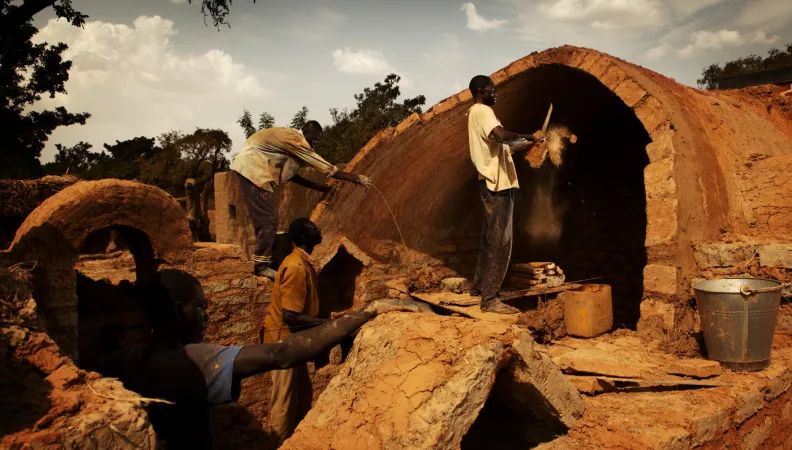Share the page
Program for the development of a low-carbon building market adapted to climate change in Africa (Nubian Vault)
Project


-
Project start date
-
Status
Completed
-
Estimated date of project termination
-
-
Project financing date
-
-
Financing duration
-
4 ans
-
Type of program
-
FFEM
-
Global financing amount
-
3474936 €
-
FFEM financing amount
-
1000000 €
-
Project lead member institution(s)
-
Ministry for Europe and Foreign Affairs
-
Country and region
-
Burkina Faso
-
Location
-
Burkina Faso
-
Type of financing
-
Grant
-
Beneficiaries
-
Association « La Voûte Nubienne » (AVN)
Ensuring African rural communities access to sustainable, adapted and ecological housing, with a very low carbon footprint, by working on measures for both climate change adaptation and mitigation.
Context
Housing is precarious for the majority of the population in Sahelian African countries. The project provides a solution to the constraints imposed by climate change in the housing sector, by encouraging the use of earth for the roofing of buildings in arid areas.
The Nubian Vault (NV) technique makes up for the growing shortage of timber resources (wood, straw, posts). It reduces the use of imported resources such as corrugated iron, cement and wooden timber frames from African coasts. This technique contributes to reducing greenhouse gas emissions and provides local solutions adapted to the increasingly devastating consequences of climate change in the Sahel region.
The areas targeted by the project – Burkina Faso, Mali and Senegal – are at risk in terms of drought phenomena, which cause a decline in harvests and the incomes of rural dwellers, as well as migratory flows towards urban centers.
By mainly addressing low-income rural communities, the project offers an alternative to the only solution of corrugated iron roofing currently available and legal. It sensitizes these communities to a new form of quality housing and optimized thermal comfort through the use of available material, relying on traditional mutual assistance in terms of labor.
Description
The project is based on four components:
- Support for the development of the market in rural and semi-rural areas, partly with franchised partners.
- Research and development: urban housing, collective buildings, school, health and agricultural complexes, specifications, development of techniques, based on experimental construction sites financed by own resources.
- Capacity building for local teams and precision of the popularization method.
- Monitoring – Evaluation – Coordination.
Outcomes
The original technique is adapted for the construction of houses:
- Popularization of a low-carbon construction system for the sustainability of the project, based on the use of local materials, and adapted to the issues of drought and desertification (lack of wood) in the regions concerned. The project contributes to the preservation of the global environment.
- The reduction of greenhouse gas emissions is estimated at 7,000 tons CO2 equivalent for the construction of 3,500 Nubian Vaults.
- Improvement in living conditions for communities (some 30,000 beneficiaries) and a revitalization of the cultural values of local mutual assistance.
- Strengthening of local entrepreneurship and the creation of a large number of local jobs, in particular in rural areas, by training some 200 “key” people or field popularizers, and over 500 village masons, by strengthening local entrepreneurship in rural and urban areas.


